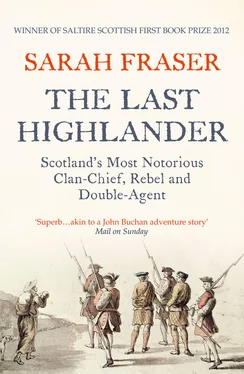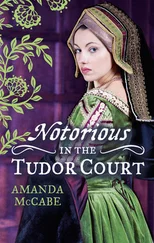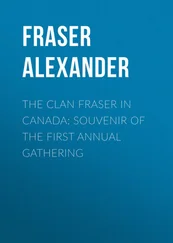At the time of Simon’s birth, the clan proclaimed widespread loyalty to the ancient royal House of Stuart. The Stuarts ruled in sacred bond with the land, just as a chief was ‘married to his clan and country’. However, decades of bloody internal conflict, ending just before Simon’s birth with the restoration of Charles II, sowed a horror of uncontrolled violence. However, in the Scottish and English governments’ minds, this independent-minded civilisation on its northern frontier, half of whom did not even speak English, posed the single biggest threat to the security of the fast-changing Scottish and British nations. Fraser country was, therefore, of strategic importance to any central authority intent on imposing the will of central government.
As the brother of a chief and great-uncle to another chief, Simon’s father, Thomas Fraser of Beaufort, grew up at the heart of this world at Castle Dounie, the historic stronghold of Clan Fraser. At the centre of the Aird of Lovat, the ancient fortress loomed on a manmade mound above the banks of the Beauly River. Towers at each corner of the castle and the thick walls between them offered protection to hundreds of the chief’s ordinary kin in times of famine or feud. If necessary, over 400 people could sleep there.
At Dounie, the Fraser chief maintained an entourage of staff, kin and allies who regulated the life of a Highland nobleman and the thousands who depended on him for their safety. One kinsman was fear an taighe, the head of the household. He controlled the chaplain, piper, harpist, steward, grooms, pantry boys, cooks, and scores of scallags (servants) running around beneath them. The principal Fraser families sent their sons to the chief’s household ‘to educate, polish and accomplish them’; they were ‘exchanged at the yeares end, and others taken … in their place’. The bonds this fostering forged throughout the clan endured for life and offered mutual protection in the frequent times of trouble that were to be a feature of Simon the future 11th Lord Lovat’s life.
Simon was the second son of Thomas of Beaufort. ‘Beaufort’ was another name for Castle Dounie. An honorary title, ‘of Beaufort’ was attached to the surname of the second line of the family tree, after the chiefly family, the Lovats. The title expressed the closeness of the connection between the two (Simon’s father was often called simply ‘Beaufort’). If Beaufort’s noble cousin Hugh, the 9th Lord Lovat, failed to raise a living male heir, then the male Beaufort Frasers would rise to be the heirs. Acknowledging their position, they had to prepare themselves for what they hoped would not happen: their cousin’s incapacity or death. It followed therefore that the men of the second line of the clan elite filled the most important clan posts.
From this position, in 1650, Simon’s father, Thomas Fraser of Beaufort, aged just eighteen, led a thousand Fraser men south to fight Cromwell’s New Model Army on behalf of Charles Stuart, recently returned from France. On 3 September 1651 a Cromwellian army numbering 28,000 met 16,000 Royalists at Worcester, in the last battle of the English Civil War. The New Model Army captured over 10,000 prisoners, among them young Thomas Fraser of Beaufort. Cromwell deported Beaufort’s fellow Fraser prisoners to Barbados as indentured labourers, or slaves. Simon’s father was lucky to survive. He was sent north and ‘keeped several years in a dungeon in the citadel that the English made in Inverness’, as Cromwell put Scotland under heavy military occupation.
Scotland eviscerated itself in the religious and dynastic wars of the mid-1600s. The country strained to cope with the thousands of government soldiers garrisoned and quartered on the nation. The troops had free rein to get supplies where they could, with the result that ‘be-tuixt the bridge end of Inverness and Gusachan, twenty-six miles, there was not left in my countrie a sheep to bleet, or a cock to crow day, nor a house unruffled’. Women were raped, animals butchered and the harvest carried away. Inverness shrank back ‘demure under a slavish calm’, economically ruined, said the Fraser chronicler. Lairds and chiefs were bankrupt, or fought ruthlessly to restore their fortunes. Cromwell’s victory and his subjection of Scotland gave the Scots a bitter taste of union with England that they were to remember in 1707, when another English ruler pressed them to give up their sovereignty.
After the Civil War, Thomas Beaufort married Sybilla MacLeod, the daughter of another chief, John MacLeod of MacLeod. It was usual for clan elites to intermarry in order to reinforce strategic alliances. Simon’s mother, Sybilla, grew up at ancient Dunvegan Castle, towering on a rocky promontory on the Atlantic coast of the Isle of Skye as if carved from the cliff. Sybilla gave Beaufort a child each year of their fourteen-year marriage, dying with the last, when Simon was just eight. Altogether nine of their children died in childhood. The surviving five, in order of age, were: Alexander; Simon; John (who adored his older brother Simon); and the girls, Sybilla and Catherine. Thomas Beaufort lived most of his life within a few miles of Dounie, but whether ‘from his numerous family, or want of patrimony, appears to have been in not very wealthy circumstances’, said the Reverend James Fraser.
Though there is no date for Simon’s birth, the Reverend James, who was also the chiefly family’s chaplain, recorded that at Castle Dounie, ‘at the propitious moment, many swords hanging in the old hall leapt from their scabbards, indicating how mighty a man of war had been added to the race’. Even in earliest youth, Simon’s face expressed force of will. His steady gaze gave the impression of watchfulness, as his eyes scrutinised and his ears listened to his father and the Reverend James Fraser. He and his brothers were tall, vigorous and brave, when many of the older generation were exhausted by wars.
The route that took the Beaufort Fraser children from their home, the manor house ‘Tomich’, to Castle Dounie, to play with their aristocratic cousins, led them through the village of Beauly. Hugh, the 8th Lord Lovat, assumed his social and political domination of the regional capital, Inverness, in matters of politics and business. However, it was Beauly and the beautiful Aird of Lovat, not Inverness, that defined young Simon’s horizons. Here, Simon and his brothers and sisters learned to ride and hunt. The males of the upper reaches of the clan sometimes spent as much as a third of the year hunting. It kept them fit and ready, trained to act in a body. If the fiery cross went up, they could fly together in an instant and chase men not deer.
When clans with territories north of the Highland capital, such as the Mackenzies whose lands bordered Fraser country, wanted to go to Inverness to attend to their affairs, they crossed the River Beauly at the ford in the village. Here they would have to pay Fraser men a toll and declare their business. In this way the Frasers were able to control an important point of access for the northern clans. A strong Fraser chief could use his geographic position to his advantage and help manage the north for the government in Edinburgh. The rewards he sought were the usual expressions of gratitude: perquisites and government positions. Geography blended always into geopolitics.
As well as being a soldier, Thomas Fraser of Beaufort was a thoughtful, scholarly man. When the 8th Lord Lovat was dying, Thomas sat for weeks at Castle Dounie by his deathbed, ‘entertaining him with history and divinity’. Simon inherited from his father a passion for clan and national history, theology and philosophical debate, as well as the satisfaction of training and leading a body of armed kinsmen. The Beaufort Fraser children received an informal education in clan history and their place in the world from the Reverend James Fraser. The son of a laird, Reverend James was at ease with English, Gaelic, French and Latin, and ‘had a useful knowledge of Hebrew, Greek, German and Italian’. Simon Fraser would acquire the same languages, becoming fluent in four and competent in five.
Читать дальше












